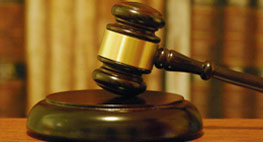Supreme Court: Trump can use Pentagon funds for border wall
Notable Attorneys
The Supreme Court cleared the way for the Trump administration to tap billions of dollars in Pentagon funds to build sections of a border wall with Mexico.
The court’s five conservative justices gave the administration the green light on Friday to begin work on four contracts it has awarded using Defense Department money. Funding for the projects had been frozen by lower courts while a lawsuit over the money proceeded. The court’s four liberal justices wouldn’t have allowed construction to start.
The justices’ decision to lift the freeze on the money allows President Donald Trump to make progress on a major 2016 campaign promise heading into his race for a second term. Trump tweeted after the announcement: “Wow! Big VICTORY on the Wall. The United States Supreme Court overturns lower court injunction, allows Southern Border Wall to proceed. Big WIN for Border Security and the Rule of Law!”
The Supreme Court’s action reverses the decision of a trial court, which initially froze the funds in May, and an appeals court, which kept that freeze in place earlier this month. The freeze had prevented the government from tapping approximately $2.5 billion in Defense Department money to replace existing sections of barrier in Arizona, California and New Mexico with more robust fencing.
The case the Supreme Court ruled in began after the 35-day partial government shutdown that started in December of last year. Trump ended the shutdown in February after Congress gave him approximately $1.4 billion in border wall funding. But the amount was far less than the $5.7 billion he was seeking, and Trump then declared a national emergency to take cash from other government accounts to use to construct sections of wall.
The money Trump identified includes $3.6 billion from military construction funds, $2.5 billion in Defense Department money and $600 million from the Treasury Department’s asset forfeiture fund.
Related listings
-
Supreme Court to consider Louisiana's non-unanimous juries
Notable Attorneys 03/12/2019The Supreme Court will consider banning non-unanimous juries in criminal cases in Louisiana, the only state that still allows them.The justices said Monday they will hear an appeal from a man who was convicted of second-degree murder by a jury's 10-2...
-
Chief justice seeks budget increase for court technology
Notable Attorneys 01/18/2019The head of the Iowa court system says technology and the need to ensure justice for everyone demands increased spending.Speaking Wednesday in his annual speech to the Legislature, Iowa Supreme Court Chief Justice Mark Cady told lawmakers “we s...
-
Indian court seeks pricing of Rafale jet deal with France
Notable Attorneys 10/31/2018India's top court on Wednesday ordered the government to provide pricing details of 36 Rafale fighter jets it is buying from France.The court said the government must bring details of the decision-making process of the deal into the public domain, ex...

Our Eugene Oregon Bankruptcy Practice
Since 2005, Erin Uhlemann has helped individuals and families facing financial difficulties file for bankruptcy relief. Erin's compassion and understanding of the law have helped hundreds of Oregonians achieve a financial fresh start. She started Willamette Valley Bankruptcy to focus on helping clients with bankruptcy and debt issues in the Lane County Area. Erin understands that choosing a bankruptcy attorney who makes you feel comfortable and confident can be as difficult as deciding whether to file a bankruptcy case. Because she knows that filing bankruptcy is not something that you planned to do or look forward to doing, Erin strives to make the process as easy as possible.
Because most people facing bankruptcy do not have extra money to pay fees, Willamette Valley Bankruptcy offers low upfront fees and will work with you to set up affordable payment plans to pay attorney fees and court filing fees. Consultations are always free so that you can get the answers you need before making any sort of financial commitment. If you have questions about attorney fees and payment plans, you can call or email today to get these questions answered.




